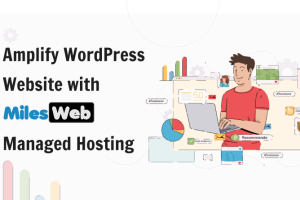Since the early 2000s, Google’s algorithm has evolved with updates. Hundreds of SEO ranking elements enter into play as part of the Google algorithm. Here’s our Google algorithm change timeline, which chronicles the most significant upgrades and adjustments.
Although the consequences of these modifications are not all equal, they represent a significant change in SEO’s direction. Whatever sector you operate in, you’ll need to pay attention if you want your website to maintain its high ranks when these changes take effect.
Let’s go through some crucial suggestions and best practices for increasing your Google search rankings in 2022.
# Best on-page optimization
On-page SEO optimization is an essential component of improving your SEO rankings. Without the requirement of machine learning or deep learning, you can manually improve SEO rankings. The following on-page optimization factors can provide effective results:
- Headings and subheadings
- Title tags and meta descriptions
- Schema mark-up
- Voice optimized SEO
- Internal and external link structure
# Make your website secure
Switching from HTTP to HTTPS is one of the most basic measures to boost SEO rankings. Since 2017, Google has labeled sites as ‘not secure’ if they aren’t secured using HTTPS. Users are provided with three layers of security through HTTPS. They are:
- Encryption is the process of converting data into an unintelligible form, often using complex algorithms and lengthy keys. Conversations are kept private, as data is encrypted before being sent from one user to another.
- Authentication ensures that a user is connecting with the correct website by preventing mid-middle man attacks and guaranteeing that they are who they claim to be.
- Data Security – It prevents data from being illegally tampered with or corrupted during a transfer.
You can assume that someone that encounters a Google security alert on your site will not stay to read your material.
Furthermore, according to Google, the protection of websites is an important ranking signal in the search algorithm; therefore, having an HTTPS page will also improve your position in search engines.
You will be able to drive more traffic to your website if you secure it and improve your Google rankings. Creating a secure website will also aid in decreasing your bounce rate – people are more likely to stay if they perceive the site is safe.
Large pictures can significantly delay your site’s loading, so keep an eye out for this and remove any files from the server that aren’t being used. Your website should load in 1-3 seconds, ideally.
# Produce High-Quality Content
Google has been coy about its algorithms since the search engine first debuted. The SEO business is a triumph of educated guesswork. The only piece of advice they’ve ever given is “create excellent content.”
However, with the advent of machine learning, Google may now legitimately claim to be having some success in interpreting the more profound semantic value of a piece of content.
The algorithms are becoming more geared towards determining what a user’s journey can accomplish. Keyword targeting will gradually lose relevance as search engines favor content that solves issues and answers inquiries.
Creating high-quality content may help you improve your website rankings significantly. This is because high-quality material increases the probability of people reading longer on your sites.
While integrating advanced technologies like AI, chatbots, and machine learning into your site might create a more seamless customer journey, it also lowers bounce rates.
And most importantly, it provides value to the user. The likelihood of repeat visits to your site will improve if you offer value to your audience.
To produce high-quality material, consider the following:
- Keyword research
- Rich snippets
- Proper grammar
- Long-form articles
- Long-form in-depth articles
- Search intent
# Enhance the user experience and site architecture
Despite their claims, Google has always prioritized the user over the content. Though this was their intention, the algorithms haven’t always been smart enough to determine the best material for a searcher’s query, and it’s taken a long time to get there.
Whatever it is that Google’s algorithm tweaks aim to achieve – whether it’s improving content for voice and mobile searches or selecting comprehensive information that fulfills the more complex search criteria – they all provide a better user experience.
Enhancing the ability to locate the information visitors seek is the easiest way to improve the user experience and increase SEO ranking.
By designing the architecture of your website and by ensuring it has effective navigation, you can increase the site’s search engine attractiveness; after all, the better your site is for users, the better it is for search engines.
It’s critical to have a logical site structure to improve site architecture. An accessible website should allow users to find the information they need quickly and easily.
The website design should be simple and easy to understand. Complex structures and ambiguous signposting might scare visitors away and cause them to leave your page.
Solid site architecture makes it easier for search engines to discover new pages on a website. A user should be able to discover any page on your website within three or four clicks, ideally.
# Build a Mobile-Friendly Website
People use Google in a variety of ways nowadays. Google can no longer tailor all search results to people with keyboards and computer screens.
For example, because of the limited screen size and wider font sizes used for mobile versions of websites, content written for desktop screens doesn’t appear to be quite the same on mobile or tablet devices.
Because of practical factors like this, the mobile version of a website may have less “space” than the conventional desktop version.
However, a recent discussion on mobile SEO optimization suggests that publishers should optimize for mobile searches since they are more common than ever before. While this is true, it omits a crucial nuance.
Content optimized for websites ranked higher on all devices, regardless of how well it is suited for mobile devices.
It is now the case that mobile-optimized content ranks higher on all devices, irrespective of how well it adapts to websites.














